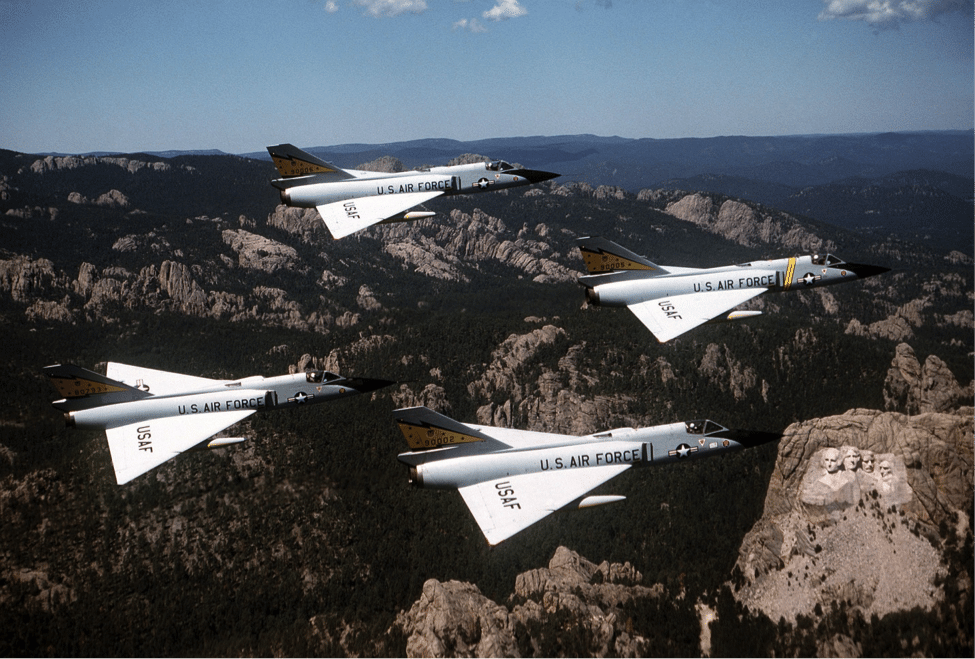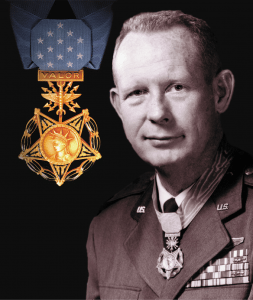Fisher’s Rescue Was Not Exactly Unique
There is an interesting postscript to this story. Fisher’s rescue of Myers in the A Shau valley in 1966 was very similar to a rescue that took place during World War II near Ploesti, Romania on August 4th 1944. A P-38 Lightning escorting bombers to the refinery targets in and around Ploesti was damaged by flak and forced to crash land in a field. Another P-38 pilot witnessed the crash, safely landed his aircraft nearby, shoehorned the other pilot into his cockpit with him, and both returned to base. Other similar rescues have been dramatized in movies and television.

No Way!
Here’s where it gets really good: The pilot whose P-38 crash landed (Richard Willsie) eventually became the commanding officer of “Jump” Myers’ squadron and was in command of it that day as Fisher rescued Myers (!) The pilot who landed his P-38, picked up Willsie, and flew him back to base (Dick Andrews) was flying top cover during the Fisher rescue (!!!) What are the odds?
A Rare Bird Indeed
Another postscript. That tough old A-1E Skyraider that Bernie Fisher landed on that torn-up strip in the A Shau valley in ’66? It is now prominently displayed at the National Museum of the United States Air Force in Dayton Ohio as one of the very few surviving Medal of Honor aircraft.

Bernie Fisher Bio
Bernard Francis “Bernie” Fisher was born on January 11th 1927 in San Bernardino, California. Raised and educated in Clearfield, Utah, Fisher served briefly in the Navy V-6 program at the end of World War II. He then enrolled at Boise State Junior College in 1947 and transferred to the University of Utah in Salt Lake City in 1949.
ANG to Flying the Six
Thanks to his ROTC work in college, Fisher was a member of the Air National Guard between 1947 and 1950. Even before he completed his degree, Fisher was called to active duty in 1951 and commissioned in the Air Force. Fisher underwent pilot training and then served with Air Defense Command as an F-106 Delta Dart interceptor pilot until 1965, when Fisher volunteered for duty in Vietnam.
Air Commando Stalwart
From July of 1965 to June of 1966, Fisher flew 200 combat sorties in A-1E and A-1H Skyraiders. Known in Vietnam as the “Spad”, the Skyraider was tough, carried plenty of ordnance, and was able to loiter over a given location longer than the jet fighters and attack aircraft of the day. Fisher was a member of the 1st Air Commando Squadron.
Post-Vietnam Career
After he returned from Vietnam, Bernie Fisher returned to Air Defense Command and flew jet interceptors until he retired as a Colonel in 1974. He then returned to his hometown of Kuna, Idaho. He lived with his wife Realla until her death on April 27th 2008.
Good Things Come to Those Who Persist
It only took 57 years to do it, but on May 3rd 2008, Bernie Fisher finally received his degree from the University of Utah.
Colonel Bernard Fisher USAF (ret) passed away on August 16th 2014.
Bernard Fisher’s Medal of Honor Citation:
For conspicuous gallantry and intrepidity at the risk of his life above and beyond the call of duty. On that date, the Special Forces camp at A Shau was under attack by 2,000 North Vietnamese Army regulars. Hostile troops had positioned themselves between the airstrip and the camp. Other hostile troops had surrounded the camp and were continuously raking it with automatic weapons fire from the surrounding hills. The tops of the 1,500-foot hills were obscured by an 800 foot ceiling, limiting aircraft maneuverability and forcing pilots to operate within range of hostile gun positions, which often were able to fire down on the attacking aircraft. During the battle, Maj. Fisher observed a fellow airman crash land on the battle-torn airstrip. In the belief that the downed pilot was seriously injured and in imminent danger of capture, Maj. Fisher announced his intention to land on the airstrip to effect a rescue. Although aware of the extreme danger and likely failure of such an attempt, he elected to continue. Directing his own air cover, he landed his aircraft and taxied almost the full length of the runway, which was littered with battle debris and parts of an exploded aircraft. While effecting a successful rescue of the downed pilot, heavy ground fire was observed, with 19 bullets striking his aircraft. In the face of the withering ground fire, he applied power and gained enough speed to lift-off at the overrun of the airstrip. Maj. Fisher’s profound concern for his fellow airman, and at the risk of his life above and beyond the call of duty are in the highest traditions of the U.S. Air Force and reflect great credit upon himself and the Armed Forces of his country.
[youtube id=”AhqEVDGeODc” width=”800″ height=”454″ position=”left”]

